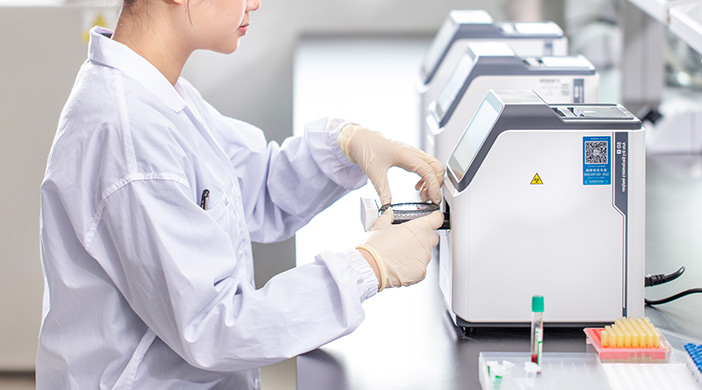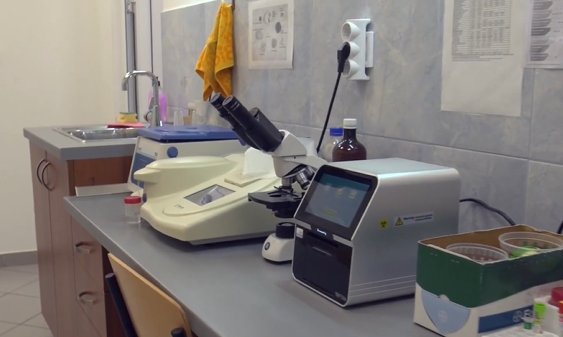1. AST/ALT (aspartate aminotransferase / alanine aminotransferase)
Since ALT is present in the liver only in the cytosol of hepatocytes, while 30% of AST is present in the cytosol and the other 70% in the mitochondria. When the hepatocytes are mildly diseased, only the enzyme in the plasma of the hepatocytes is released and the rise of ALT is greater than that of AST; only when the mitochondria are damaged at the same time, the rise of AST will exceed that of ALT.
Clinical significance of AST/ALT ratio.
The AST/ALT ratio is different in patients with different types of hepatitis, for example
1) AST/ALT ratio <1
When the hepatocytes are mildly diseased, the mitochondria of the hepatocytes are still intact, so the ALT that is released into the blood is mainly present in the plasma of the hepatocytes; therefore, the A LT rises more than the AST, and the AST/ALT ratio is <1. For example, in early acute hepatitis and mild chronic hepatitis, the AST/ALT ratio can fall to about 0.56. In the recovery phase of hepatitis, the ratio gradually increases to normal.
2) AST/ALT ratio ≈ 1
In severe hepatitis, moderate and severe chronic hepatitis, the mitochondria of the hepatocytes are also severely damaged and AST is released from the mitochondria and cytoplasm, thus showing an AST/ALT ≈ 1.
3) AST/ALT ratio > 1
When hepatocytes are severely damaged, enzymes in the cytosol and mitochondria are released, resulting in a greater increase in serum AST than ALT. For example, in cirrhosis, the ratio can increase to 1.44, and in chronic active hepatitis, the ratio is often higher than normal.
4) AST/ALT ratio >1, or even >2
In patients with cirrhosis and hepatocellular carcinoma, the degree of hepatocyte destruction is more severe. Mitochondria are also severely damaged, so AST is significantly elevated, with AST/ALT >1, or even >2.
Those with AST/ALT ratios of 1.20 to 2.26 often develop fulminant liver failure and die.
5) AST/ALT ratio >3
It has been reported that 50% of patients with hepatocellular carcinoma have AST/ALT ratio >3, and the longer the course of the disease, the higher the ratio. Therefore, AST/ALT ratio can also be used as one of the indicators to determine liver cancer. For long-term heavy drinkers, AST/ALT>2 indicates the possibility of alcoholic liver disease, and AST/ALT>3 has more diagnostic significance.

2. DBIL/TBIL (direct bilirubin / total bilirubin)
Jaundice can be divided into prehepatic jaundice (hemolytic jaundice), hepatocellular jaundice, and posthepatic jaundice (obstructive jaundice/cholestatic jaundice.) The DBIL/TBIL ratio is important in the differentiation of these three causes of jaundice.
1) Hemolytic jaundice: the DBIL/TBIL ratio is <0.2. Hemolytic jaundice is due to hemolysis, excessive destruction of red blood cells, and bilirubin production exceeding the load of the liver. It is mainly characterized by elevated indirect bilirubin, while direct bilirubin is essentially normal.
2) Hepatocellular jaundice: with a DBIL/TBIL ratio of 0.4-0.6. Hepatocellular jaundice is due to impaired disposal of bilirubin by hepatocytes, which affects the uptake, binding, and secretion of bilirubin by the liver, resulting in varying degrees of elevated direct and indirect bilirubin. The DBIL/TBIL ratio is mostly between 0.4 and 0.6.
3) Obstructive jaundice: DBIL/TBIL ratio > 0.6. Obstructive jaundice is caused by the obstruction of bile secretion and the backflow of bilirubin into the bloodstream, and is mostly moderate to severe jaundice; DBIL/TBIL ratio > 0.6. In the recovery period, total bilirubin decreases and DBIL/TBIL ratio may increase, even reaching 0.8-0.9. TBIL ratio does not exceed 0.4, obstructive jaundice can be excluded.
3. A/G (albumin/globulin)
The albumin to globulin ratio (A/G) mainly refers to the ratio of albumin to globulin. Generally the ratio of albumin to globulin is normal in the case of normal liver function, and albumin is higher than globulin.
Since the albumin in our body is made in the liver, when the liver function is abnormal, the albumin, which is the molecule in the albumin globule ratio, will be reduced and the phenomenon of low albumin globule ratio will occur.
Normal reference value: (1.5 to 2.5):1 (1); liver damage, mainly seen in chronic processes. the A/G ratio reflects the degree of liver function damage. A ratio of <1.25 indicates liver damage. A ratio <1 indicates severe lesions and is commonly associated with cirrhosis of the liver. Multiple myeloma, lymphoma, systemic lupus erythematosus, rheumatoid arthritis and other diseases can cause a large amount of globulin synthesis, resulting in white ball inversion.
4. FPSA/TPSA (free prostate-specific antigen/total prostate-specific antigen)
Currently, TPSA>4 ug/L is usually used as the threshold value for screening prostate cancer in China. Referring to TPSA results between 4 and 10 ug/L as the gray area, both prostate cancer and prostate enlargement are possible. And when TPSA >10 ug/L, prostate cancer is highly likely.
The higher the FPSA, the better. The FPSA/TPSA ratio of 0.19 is often used as the threshold value. When the serum TPSA is in the gray area, FPSA/TPSA appears to be very important. when FPSA/TPSA>0.19, prostate cancer is less likely. When the FPSA/TPSA value is <0.19, prostate cancer is more likely. when the TPSA is in the normal range, the FPSA/TPSA ratio is negligible.
5. PGI/PGII (pepsinogen I/ pepsinogen II)
The combined measurement of PGI and PGII ratio can serve as a "serological biopsy" of the mucosa of the fundic glands. Common meanings are as follows.
-
PGI ≥ 70ng/ml or PGI/PGII negative (-) Normal
-
PGI<70ng/ml and PGI/PGII positive (+) Mild atrophy
-
PGI<50ng/ml and PGI/PGII moderately positive (2+) Moderate atrophy
-
PGI<30ng/ml and strong positive PGI/PGI I (3+) Highly atrophic
Analysis of PG test for dynamic changes in prognosis of gastric diseases : PG
(1) When PGI>240 or PGII>20, there is a break in the gastric mucosa, it is recommended to do gastroscopy for further examination or to review after two weeks such as abstinence from alcohol. The possible reason is that PGII is more stable, but PGI in the active phase increases significantly when the gastric mucosa is attacked or damaged. HP infection, superficial gastritis, erosive gastritis, gastric ulcer, duodenal ulcer, can lead to an increase in serum PGⅠ and PGⅡ. PG II is significantly increased in gastric ulcer recurrence, and PGⅠ and PGⅡ are significantly increased in duodenal ulcer recurrence.
(2) PGI<70, PGI/PGII<3 when PGI/PGII<3 gastric mucosal cell atrophy, gastroscopy is recommended for further examination. Atrophic gastritis predominates, with special attention to high risk factors for atrophic gastritis, intestinal chemosis, heterogeneous hyperplasia, and gastric cancer.
(3) PGI<70,PGI/PGII>3 pepsinogen secretion is low, regular review is recommended, with low gastric acid secretion predominant and high risk of atrophic gastritis, intestinal metaplasia, etc.


